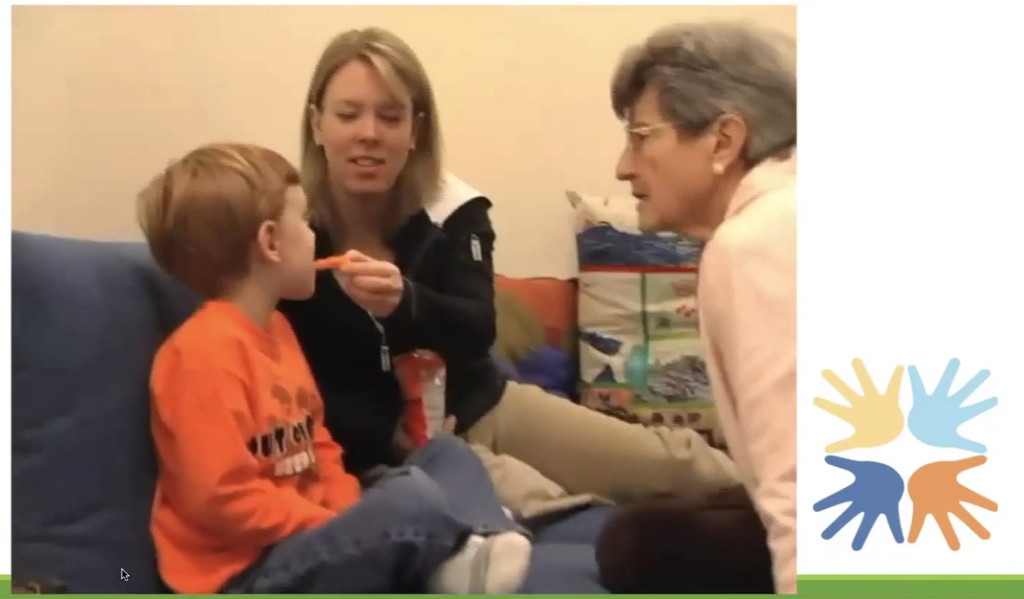Theraplay play therapy attachment trauma

Theraplay®: Harnessing the power of play to model healthy parent-child relationships
Exclaiming “jelly and ice cream!” in a series of different voices, picking compliments for someone using words beginning with the letters of their name, and pulling funny faces in a game of ‘follow the leader’.
Jessica Weidel certainly delivered on her promise to deliver an interactive online session for the Action Trauma Network! On 14th March, Certified Theraplay® Therapist, Trainer and Supervisor Jessica Weidel LMHC joined us live from Washington in the USA to deliver one of our most popular webinars to date.
Developed over 50 years ago, Theraplay® is a dyadic child and family therapy, designed for professionals to support healthy attachment between child(ren) and caregiver(s). They describe it as “a child and family modality of play therapy for building and enhancing attachment, self-esteem, trust in others, and joyful engagement”.
Therapists guide and support parents/caregivers and children in activities and games which range from fun to challenging to tender and nurturing.
Jessica delivered an engaging presentation on attachment and trauma which included a basic introduction to the modality, clinical video examples of treatment, and interactive group activities. This blog summarises the key takeaways of this value-packed webinar.

Therapists guide and support parents/caregivers and children in activities and games which range from fun to challenging to tender and nurturing.
Jessica delivered an engaging presentation on attachment and trauma which included a basic introduction to the modality, clinical video examples of treatment, and interactive group activities. This blog summarises the key takeaways of this value-packed webinar.

Video 1: Theraplay® founder Phyllis leads a session with a young boy and his mother
This snippet depicted a physical play activity, followed by some sensory work, sharing a bag of crunchy snacks. It provided a demonstration of the following characteristics of the approach:
Pro-active, intensive, relationship focused parent-child treatment model
Modeled on natural patterns of healthy interaction
Parents actively involved in treatment; practitioner work together to engage the child
Respectful, emotionally attuned, interactive physical play
Informed by attachment theory, intersubjectivity, brain research and play
Our delegates’ observations of the session included:
“Physical, involving a lot of contact”
“Therapist invites Mum to participate”
“Sensory, body-focused, physical”
“Child and parent seem to be having fun”
“Senses are engaged”
“Sitting on the floor”
The science of Theraplay®
Some of the key foundational theories underpinning the approach:
Attachment Theory (Bowlby, Ainsworth, Main, Fonaghy)
Affect Regulation Theory (Schore)
Polyvagal Theory (Porges)
Developmental Trauma (van der Kolk)
Interpersonal Neurobiology (Siegel)
Neurosequential Development of the Brain (Perry)
Intersubjectivity (Trevarthen)
Theraplay®’s four dimensions of healthy attachment
Structure
In a healthy relationship, a parent/caregiver provides the following for a child and the child receives regulation from that structure:
Predictability
Organisation
Outer regulation
How practitioners support structure:
Adult is the responsible leader, assuring child of order
The experience is positive, with environmental regulation
Establishing relational regulation, teaching the child self-control
Inner and outer disorder is addressed
Engagement
Characterised by physical connection, such as touch and eye contact, engagement shows the caregiver can understand and reflect what the child is feeling. Using social engagement provides:
Felt safety / inner state regulation
Social Engagement System
Attachment Experiences
How practitioners support engagement:
Using their own Social Engagement System (SES) to engage SES of parent and child
e.g. Raising voice for excitement, energy; lowering voice to encourage down-regulation
Use child’s verbal and physical cues to maintain engagement
Engage child and parent in attachment enhancing experiences
Nurture
Physical touch including soothing actions allow the child to develop and experience feelings of:
Self worth
Stress reduction
Down-regulation
How practitioners support nurture:
Sets up gentle, caring, soothing activities, e.g. feeding – see video 1 example above
Meets child’s unfulfilled younger needs; can address ACEs or ‘holes’ in early development
Looks for opportunities to express appreciation/concern – words of validation are important
Looks for opportunities to support both the parent and the child
Challenge
In a healthy relationship, an adult understands where their child is developmentally and how to help them grow. E.g. holding your hands out and using encouraging words to help a child take their first steps. Challenge fosters the following for children:
Competence
Confidence
Self-efficacy




